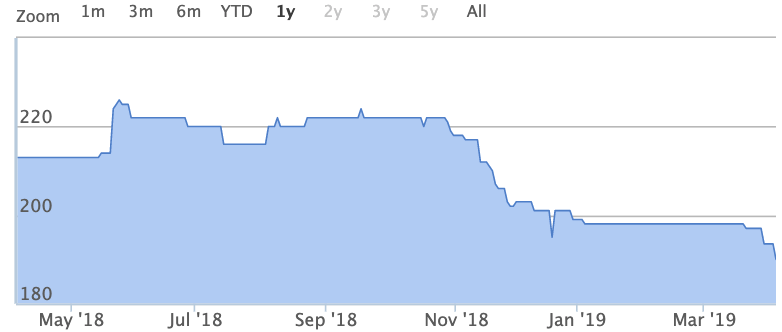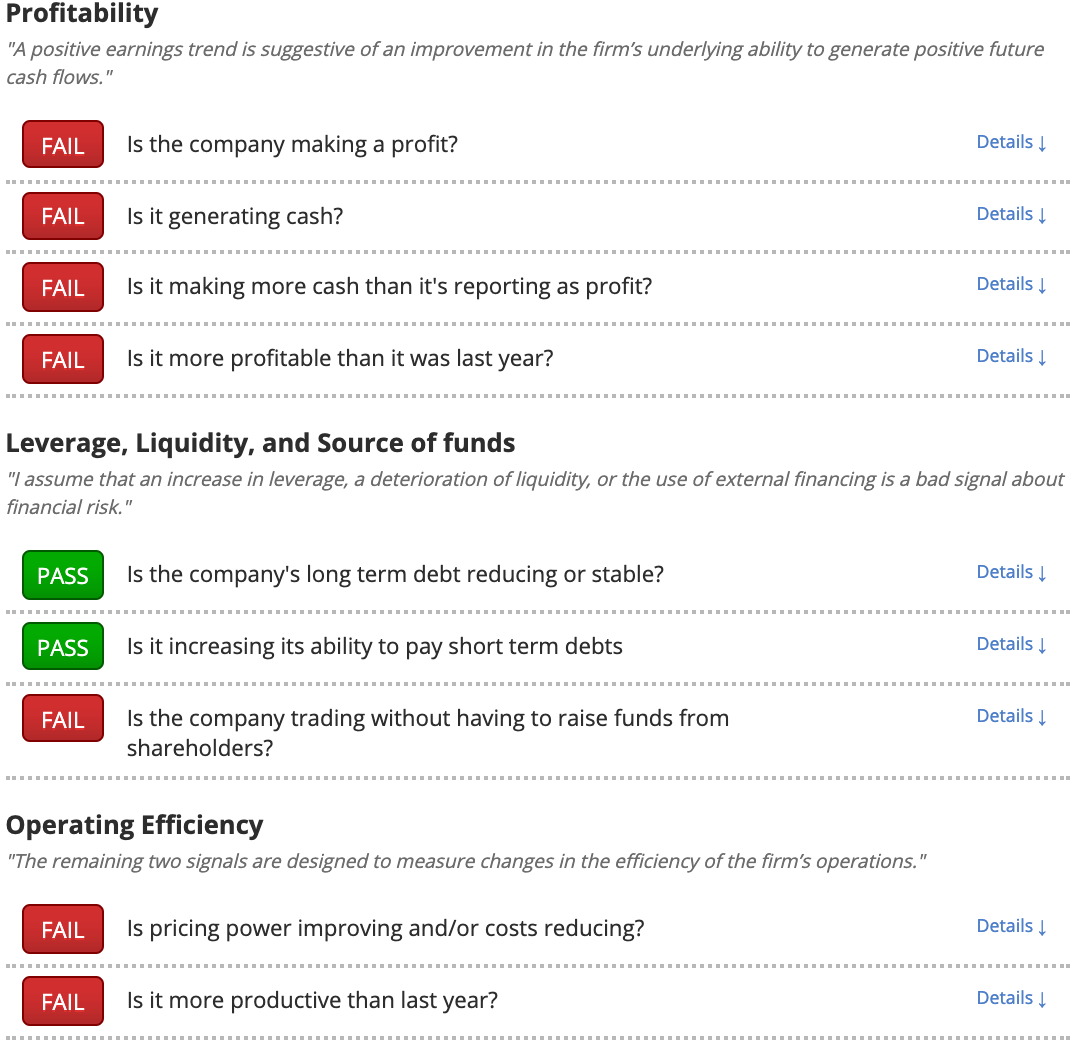Seven reasons why Trufin's (LON:TRU) share price might be in trouble
Technology operator Trufin's (LON:TRU) share price has had a disappointing time of late:

What is driving the share price underperformance here? The group IPOd in 2018 and has only been generating revenue since 2016. What's more, it has posted some pretty substantial losses during its short life as a listed company, especially given its market cap of £188.4m:

One thing in the group's favour is the fact that it has just over £100m of cash on its balance sheet. Nevertheless, the fact that the group has had to raise more than £150m in the two years since its IPO suggests that Trufin has a problem with cash burn.
Given forecasts of more chunky losses in the years ahead, it is vital that Trufin has the finances to fund its operations. Luckily there is a checklist called the Piotroski F-Score specifically designed to identify financial health trends.
Unfortunately, what the F-Score algorithm says for Trufin is not good. We'll get into this later, but first a bit more on what this number actually means.
Why Trufin (LON:TRU) shareholders need to know the Piotroski F-Score
The Piotroski F-Score is a nine-strong checklist split up into three sections, each looking at a different part of a company's financial situation. Its secret sauce is that, unlike most ratios, the F-Score looks more deeply into the direction in which a company’s financial health is moving.
When a stock gets beaten down it ends up in the bargain basement of the stock market. From here there are generally three outcomes. The stock either:
- Stumbles along, zombie-like,
- Tumbles into administration, or
- Recovers emphatically
Piotroski found that weak stocks with an F-Score of 2 or less are five times more likely to either go bankrupt or delist due to financial problems. Working our way through Piotroski's checklist, we can see that Trufin gets a lowly F-Score of 2 out of a possible 9. Food for thought for anyone looking to hold onto their money.

Fortify your portfolio with simple, effective tools
The problem areas for Trufin identified here can be explored in more depth on Stockopedia's research platform. All the best investors have stringent due diligence processes that reduce the chances of them suffering big losses, so why not take a leaf out of their book?
Simple tools can help us better measure and understand the risks we take. That's why the Stockopedia team has been busy building new ways of understanding investment risks and company characteristics. In this webinar, we talk about two or our most popular innovations: StockRank Styles and RiskRatings. These indicators transform a ton of vital financial information into intuitive classifications, allowing you to get an instant feel for any company on any market - sign up for a free trial to see how your stocks stack up.
About us
Stockopedia helps individual investors make confident, profitable choices in the stock market. Our StockRank and factor investing toolbox unlocks institutional-quality insights into thousands of global stocks. Voted “Best Investment Research Tools” and “Best Research Service” at the 2021 UK Investor Magazine awards.
